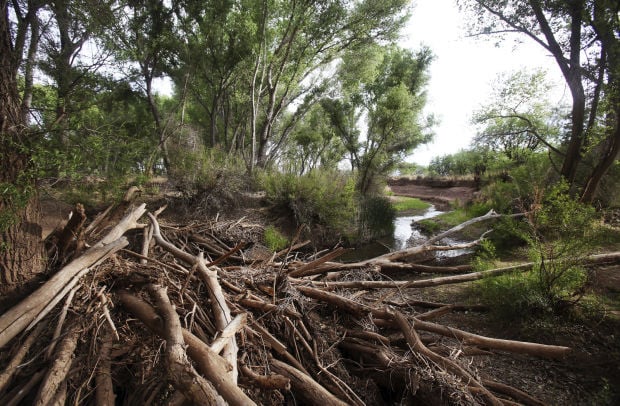PHOENIX — State water officials did not properly consider the rights of the Bureau of Land Management when it gave the go-ahead for a 7,000-home development in Sierra Vista, the Arizona Court of Appeals ruled Tuesday.
The judges on one hand said the Department of Water Resources did nothing wrong with determining that the Pueblo del Sol Water Co. showed water is “legally available” and it is able to provide water to the development.
But Judge Jon Thompson, writing for the unanimous court, said the department did not consider that the BLM has a claim on some of the underground water, a claim based on Congress having established a conservation area along the San Pedro River. Thompson said only after the state takes that into account can it determine if there is still enough water left over to allow for the Tribute development.
Yet the appellate court said while the BLM’s interests need to be taken into account, the state does not have to separately consider the potential impact of the proposed groundwater pumping on the San Pedro National Conservation Area.
“It’s a partial victory,” said attorney Joy Herr-Cardillo of the Arizona Center for Law in the Public Interest, representing those challenging the department’s original decision to allow the development.
She said while the ruling does not specifically protect the riparian habitat, any decision giving the BLM the water it needs effectively accomplishes the same purpose.
A spokesman for the Department of Water Resources said his agency was still studying the ruling and had no immediate comment.
Tuesday’s ruling is the second setback this year for efforts by Castle & Cooke to develop the property.
Earlier this year, Gov. Doug Ducey vetoed a measure that would have allowed Sierra Vista to decide that the developer did not need to prove it had adequate water, a move that would have effectively short-circuited any legal challenges.
“Ensuring the certainty and sustainability of Arizona water is a top priority,” the governor wrote. “I will not sign legislation that threatens Arizona’s water future.”
The issue has its roots in the 1980 Groundwater Management Act that resulted in creation of five “active management areas.”
For the Phoenix, Prescott and Tucson areas, the goal is “safe yield” by 2025 when the amount of groundwater withdrawn is no more than recharge. Pinal and Santa Cruz have other goals.
Outside those areas, developers must get a determination from DWR of whether there is a 100-year assured water supply.
The lack of that, however, does not prevent them from building. They do, however, have to disclose that fact to initial buyers.
And what’s important here is a change in that 1980 law that allows counties to actually mandate that 100-year showing before development can occur, something Cochise and Yuma counties have done.
Castle & Cooke, which already has invested $7 million in the project, got such a finding from DWR.
A state administrative law judge upheld the finding. That resulted in a lawsuit by BLM and environmental interests and a ruling by a trial judge that the state agency did not consider competing claims to the groundwater. DWR and the water company then sought appellate court review.
In Tuesday’s 26-page ruling, Thompson said the water agency’s rules on making the determination are consistent with state law. But he said that “does not excuse DWR from considering BLM’s priority federal water claim.”
And Thompson said there are claims by the federal agency for both the surface and groundwater.
These go back to the 1980s, when Congress designated about 36 miles of the San Pedro River basin as a national conservation area. And Congress created a federal water right for the area “in a quantity sufficient to fulfill the purpose” of protecting the riparian area.
Legally, while federal water rights are subordinate to existing ones under state law, they are senior to the claims of others seeking to appropriate water in the future.
Pueblo del Sol did not file an application for a certificate of assured water supply through 2032 for Tribute until June 2011.
Complicating matters is that the process of determining water rights to the entire Gila basin, which includes the San Pedro, has been going on now for about 40 years. And that makes the amount of water to which BLM is entitled currently “unquantified.”





